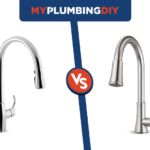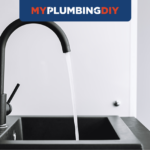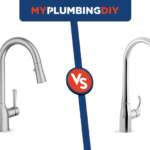This post may contain affiliate links. If you use these links to buy something we may earn a small commission. Thanks.
When the time comes for you to reinstall a faucet in either your bathroom or kitchen, you need to make sure you know exactly what faucet hole size to get.
Faucets have to fit within your existing countertop space and most of them come with built-in hole sizing. This means that you can’t just go out and buy any faucet–you have to buy the right one.
You need to figure out three numbers:
- Faucet hole size
- Number of holes in your sink
- How far apart your faucet holes should be
Faucets may have slight variations in style and size; however, there is usually a way to make your desired kitchen faucet work for you.
Whether you have a standard faucet hole size or not, there’s sure to be an option that’s just right.
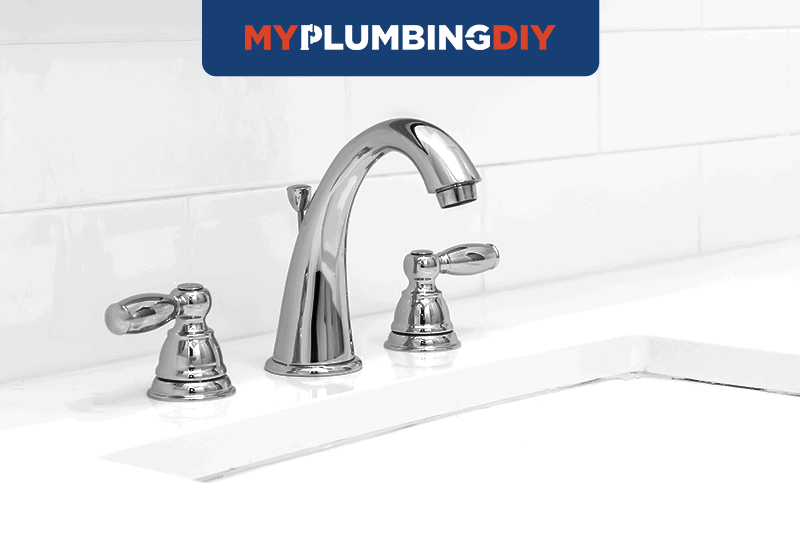
What are the Standard Faucet Hole Sizes for Kitchens and Bathrooms?
The standard faucet hole size for both kitchen and bathroom faucets is 1.375 inches in diameter. However, this can vary slightly from model to model.
If a faucet is bigger than the standard hole size, this will generally be advertised alongside the product. You may have multiple faucet holes to fill, depending on what sink you choose.
Standard faucet hole sizes for countertops
The standard faucet hole size is 1.375 inches, so you should aim for this diameter if you are drilling a faucet hole into a countertop. Most countertops or sinks with pre-drilled holes will come with the standard sizing already in place.
How to measure your faucet hole size
The easiest way to measure faucet holes is to use a measuring tape. It can be a bit tough to do if you have a faucet already inserted.
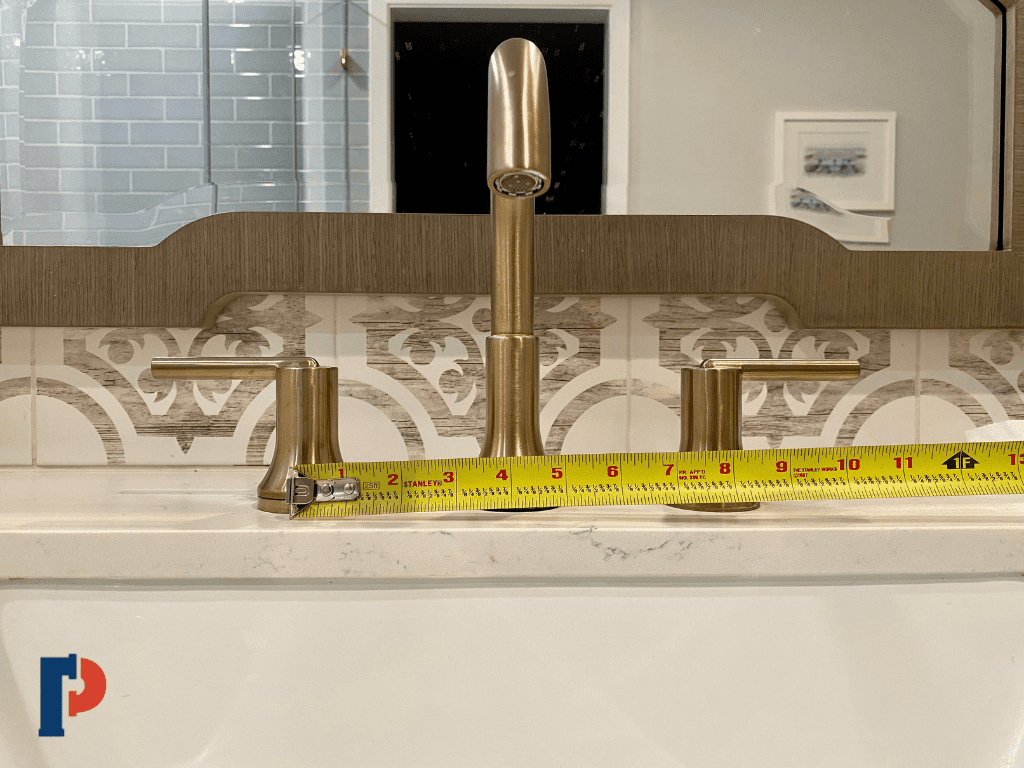
How Many Faucet Holes Should the Sink Have?
The number of holes required for a faucet installation depends on the model of faucet that you want. Sinks can come up with 1, 2, 3, or 4 holes.
We’ll do a quick breakdown of what a faucet with each number of holes looks like.
Single hole
A single hole faucet spout will have one hole, typically centered on the sink. The faucet is placed into the hole and the handle/spout has an attached handle that controls both hot and cold water.
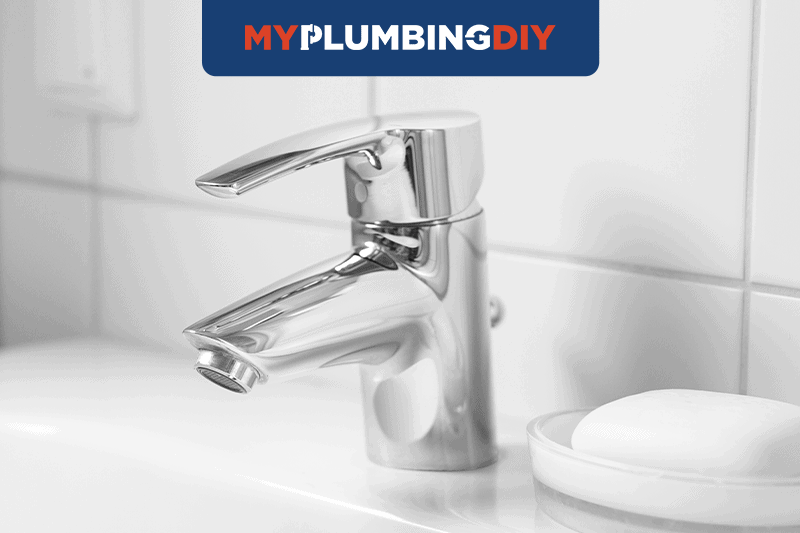
Two hole
The faucet spout comes with a hole and the second hole is off to the side with a single handle for hot and cold water. These are common for laundry rooms where you may not have much countertop space to drill multiple holes.
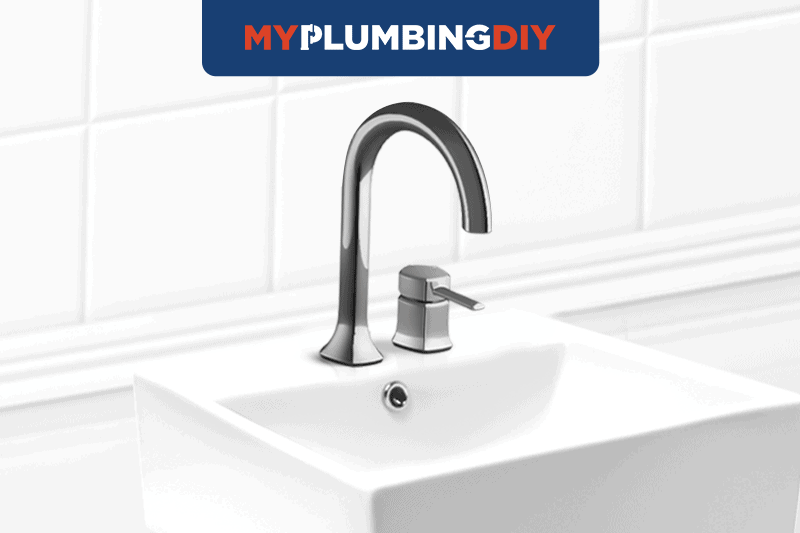
Three hole
The faucet spout is placed in the center hole and then there are two more holes on either side for separate hot/cold water handles.
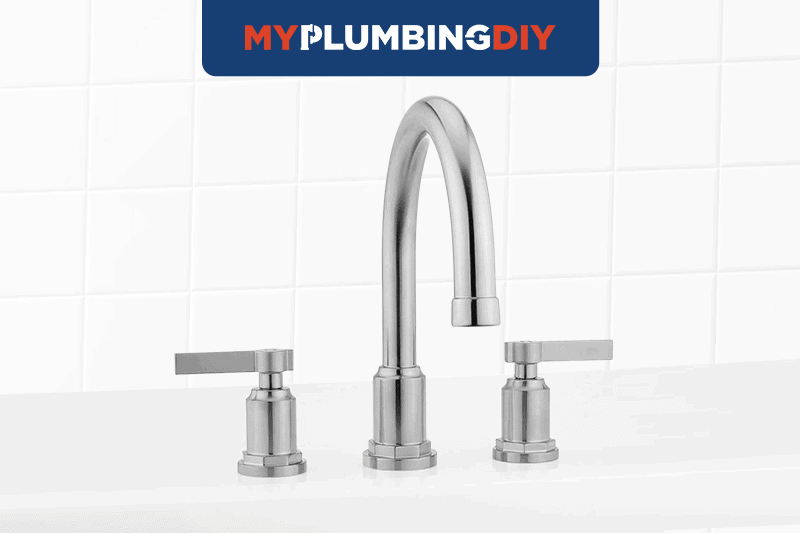
Four hole
These are just like the three hole faucets, but come with an extra fourth hole if you’d like to install a soap dispenser or a separate pull out sprayer.
Smaller sinks may look cramped with four holes, so keep that in mind when planning your ideal sink setup. Be sure to get all your measurements right before beginning the installation process!
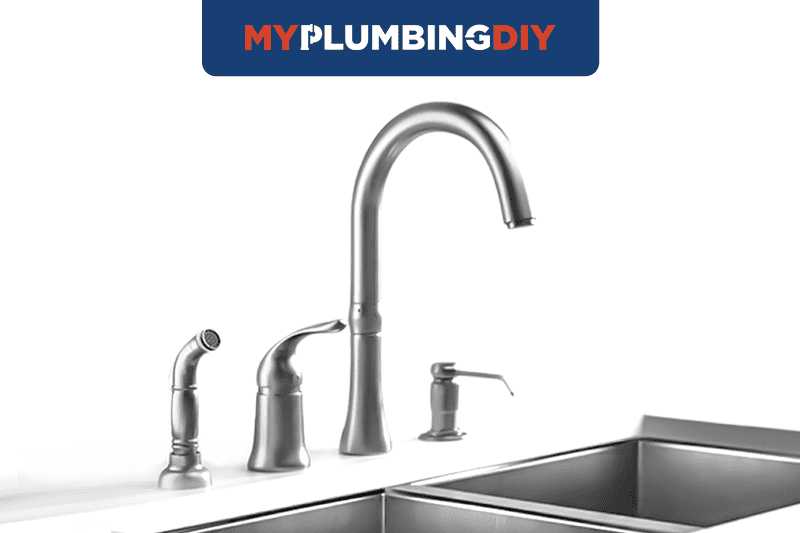
How many holes should I have for my kitchen faucet?
Most people end up choosing between a single and three hole faucet. These are the simplest and look the sleekest.
Single hole faucets are common for kitchen faucets so you can easily switch back and forth between hot and cold water.
The fourth hole on a kitchen sink can be handy to provide a side spray which is great to use while you wash the dishes.
How many faucet holes should I have for my bathroom?
Bathroom faucets usually come with a single or three hole faucet.
We love having three hole faucets because they look sleeker and add a bit of class to the design. You can also control the hot and cold water separately.
Single hole bathroom faucets are common too. The spout comes out over the sink and the control lever is usually off to the side or directly on top of the spout.
Some bathrooms will also come with a wall mount so that you can keep as much countertop space as possible. The faucet holes are drilled into the wall and aimed at the sink.
Standard Faucet Hole Spacing
The distance between faucet holes depends on your chosen faucet as well as how you want it to look. The space between the holes primarily comes down to the style and size of the sink that you are using, as well as how many holes will be drilled into the sink.
Regardless of how many holes there are, you want the holes to be as centered in the sink as possible to create a balanced and symmetrical look.
Single Hole vs. Centerset
The main difference between a single hole and centerset faucet is the lever and hole placement. A single hole is normally placed in the center of the sink. Some exceptions may be in a laundry room where you have it placed to the side.
Centerset faucets normally come with three handles, instead of a single handle. They also have a full mount instead of just a single hole, but they are sometimes classified as a single hole.
Companies like Moen or Delta create both kinds of faucets. Some centerset faucets are single hole, but some are 3 hole. It just depends how they are drilled.
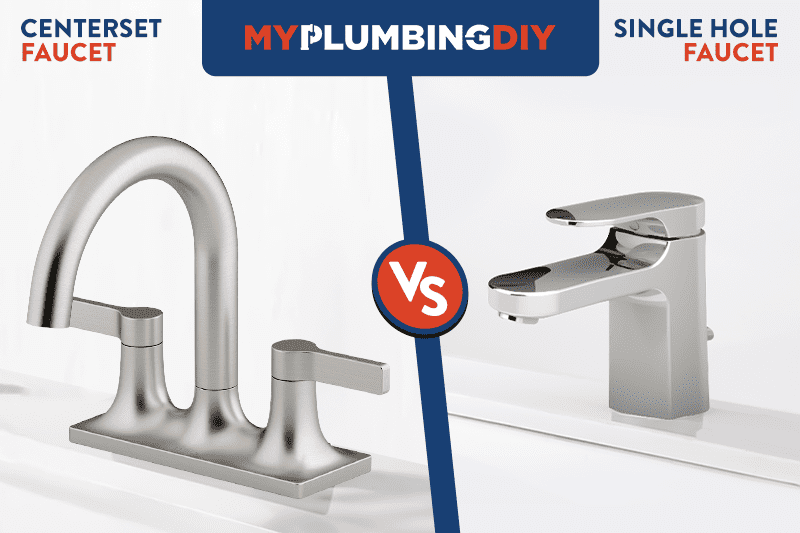
A good rule of thumb to follow is to keep an even number of inches between the holes. The bigger the sink, the larger this gap will likely be. For example, the space between the holes in a center-set sink should be less than the space between the holes of a widespread sink.
4 in vs 8 in Faucet (also centerset vs widespread faucets)
Four inch faucet spreads are often centerset faucets, which have three holes – hot and cold water connect to the respective faucets and then come out of the spout, which is fitted into the middle hole.
A four-inch centerset faucet means that there is a four-inch gap between the two furthest away mounting holes.
The difference between 4 and 8 inch faucets is the distance between the handles.
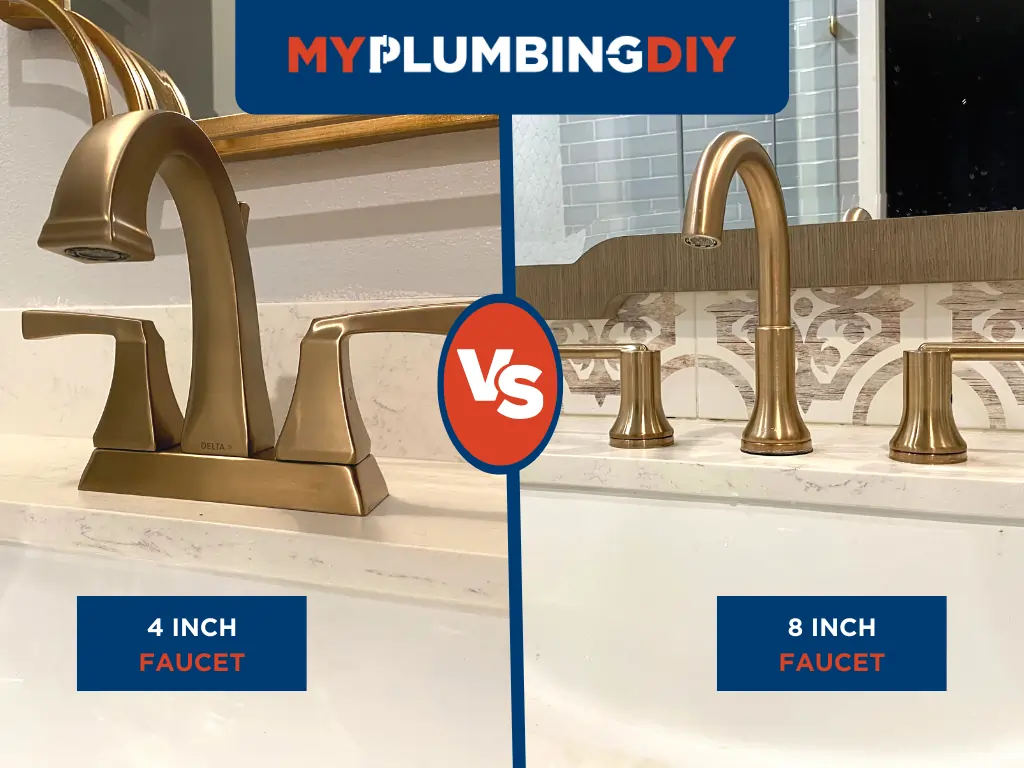
An 8 inch faucet is a widespread faucet, meaning that the hot/cold water handles are spaced further away from the faucet spout in the middle.
Centerset faucets are ideal for smaller sinks as they create a neat and compact look in both bathrooms and kitchens. In addition, their sleek all-in-one design keeps any home space looking clean and tidy.
We’ve done a full comparison on widespread vs centerset faucets if you need help deciding which one is right for you!
The Ideal Thickness of a Faucet Hole
The thickness of a faucet hole will vary from model to model. The thickness largely depends on the type of bathroom faucet that you are installing.
The product will come with specifications, so make sure you check these to ensure that you get the thickness of the faucet hole just right.
Final Verdict: What Faucet Set-up Should You Get?
If you’re buying a new faucet, you need make sure to measure you’re buying one that will fit your countertop and sink. If you already have holes drilled, then measure the diameter of the holes and the spacing in between. This will help you find a faucet that fits your bathroom.
If you’re drilling holes yourself, I recommend going with the standard faucet hole size of 1.375 in. For spacing, I recommend a centerset faucet for your bathroom and a single hole in your kitchen.
